Last updated: March 27, 2024
What is noni, and how should we cut, prepare, and eat this unique fruit? This guide explains everything we need to know about the smelly noni.
Strange looking, stranger tasting, and even stranger smelling; the noni fruit is unlike any other fruit you’ll likely ever come across. But what makes it so unique doesn’t stop there.
When under-ripe, nonis are hard like a potato. Once ripe, they turn translucent and gelatinous. Because of this, most people unfamiliar with this fruit have no idea how they’re supposed to cut and eat noni.
Below, I will show you the secret to preparing noni fruit for any use and the best way to eat this appropriately named “cheese fruit”.
What Is Noni?
Before I get into how to eat noni, let’s first get to know this unique fruit a little better. There’s a lot to take in!
Origins
Noni, also known by its scientific name, Morinda citrifolia, is a fruit-bearing tree in the coffee family, Rubiaceae.
Its native range extends across Southeast Asia and Australasia and has long been cultivated throughout the tropics.
The Noni fruit is noted for its strong smell when ripening and is sometimes called the “cheese fruit” or “vomit fruit” due to its pungent aroma. Despite this, it has been used for centuries in traditional medicine by cultures around the Pacific Ocean.
Appearance
The noni tree is a close relative of the coffee bush, but the fruits these plants produce, look and taste nothing like a good cup of Joe.
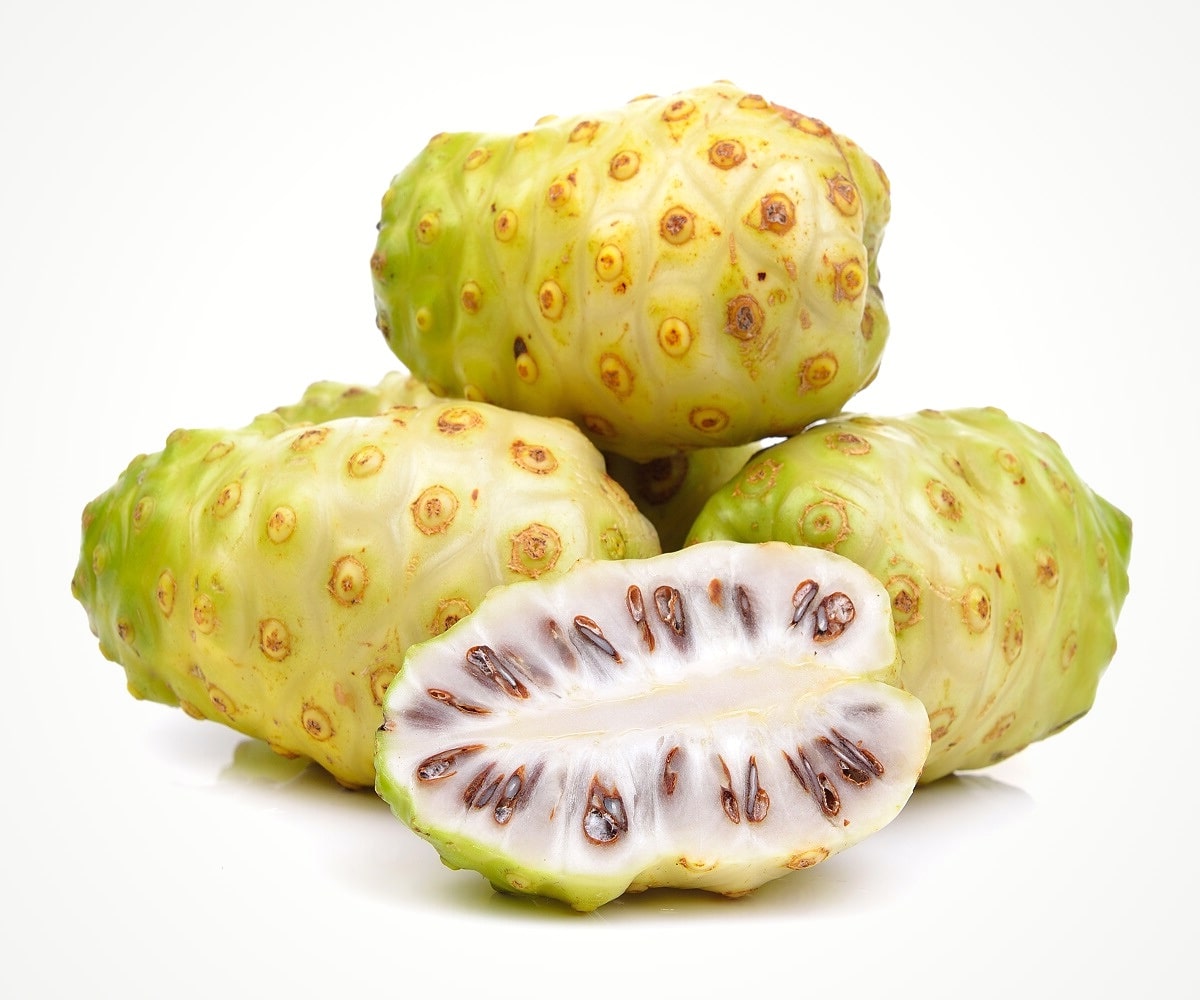
Before they ripen, noni looks somewhat like a smooth pinecone. It is oblong with rounded lumps and distinct eyes, and is about the size of a pear.
Immature fruits are light green with white eyes. Once full-sized, these fruits ripen very quickly, turning yellow and then white. Once fully ripe, the white skin takes on a translucent look, and the eyes darken to tan.
Texture and Seeds
Green and yellow fruits are hard to the touch and have a texture like a potato. Ripe white fruits are soft and gelatinous.
Inside the odd, pinecone-shaped noni are dozens of thick brown seeds.
The seeds from unripe fruits can be cooked and eaten. Ripe fruits have softer seeds that can be chewed but are typically not eaten.
Taste and Smell
While nonis look very unique, it’s their odor that makes them infamous. Often called “cheese fruit” or “vomit fruit”, they have a pungent odor like Limburger cheese or dirty socks. This odor is at its most pungent when the fruit is ripe and squishy.
Some of that odd smell comes through in the flavor of the fruit. Ripe fruits taste earthy and composty, with a hint of bitter spiciness. Interestingly, this acrid fruit will leave your mouth tingling and even a bit numb after eating.
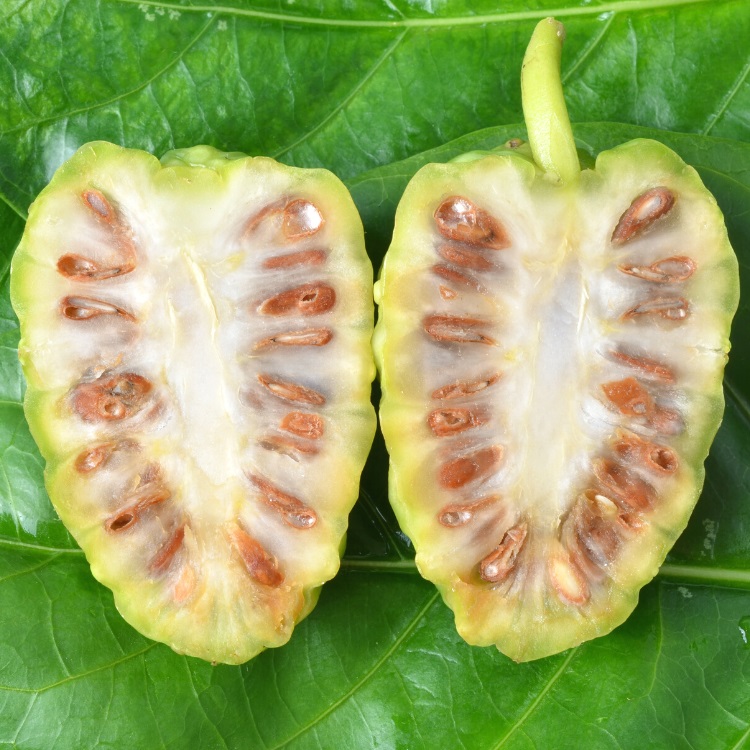
Unripe fruits taste less like stinky cheese but are very bitter and acrid. Fruit that has just turned white but has not yet softened has a fairly neutral flavor with hints of bitter sourness. Both will cause some tingling and numbness in the mouth, but this is less pronounced than with ripe fruit.
Due to the largely unappetizing flavor of noni, most indigenous cultures native to Southeast Asia, the Pacific Islands, and Australia, where noni originates, consumed the fruit only in times of desperation.
Oddly, though, some cultures in these regions revere the fruit for its claimed health benefits and utilize it frequently as food and in ceremonies.
These people primarily use noni for its juice, which can be drunk raw or fermented. Unripe fruits are cooked and used in curries or eaten with added salt as a snack.
Nutrition
Like any fruit, Noni offers a range of nutrients, such as vitamin C, vitamin A, niacin, and calcium, although not in staggering amounts.
If you would like to learn more about the potential benefits of noni (juice), then this study on the NIH website might be of interest.
Cutting and Eating Noni Fruit
How you cut and prepare noni depends largely on whether you’re working with an unripe or ripe fruit, but most people will want to consume a ripe noni.
Preparing Unripe Noni
Green noni is hard and dense. It is also intensely bitter and inedible without cooking it first. Typically, unripe noni is sliced or diced and then sauteed with other vegetables.
Steps to eat unripe noni:
- Before cutting, wash the fruit thoroughly under running water to remove any dirt.
- Start by peeling off the thin skin using a vegetable peeler.
- Place the peeled noni on your cutting board and slice it in half lengthwise.
- Slice or dice each half into your preferred-sized pieces just as you would with a potato or carrot.
- Cook the chunks, seeds and all, according to your recipe.
Cooking noni mellows the bitterness and reduces its mouth-numbing power. When paired with a savory sauce, it adds a nice bitter sourness to the dish.
Preparing Ripe Noni
Nearly ripe noni that is white and slightly soft but not squishy can be sliced and eaten raw. Some prefer to only slice the outer portion, avoiding the crunchy seeds inside. The flavor at this stage is mild and almost potato-like.
Very ripe noni is so squishy that cutting it would be impossible. Some will eat ripe noni just as you would an apple or pear, but it is quite a bit messier. At this stage, the peel and seeds are edible.
But the most common preparation is to utilize the fruit for its juices.
Steps to eat ripe noni:
- Before preparing, wash the fruit thoroughly under running water to remove any dirt.
- If you don’t want to eat the skin, try to peel it off. This may be challenging, depending on how soft the fruit is.
- Place the noni on your cutting board and slice it into smaller pieces. Again, this may be challenging, depending on the softness.
- The pieces (with or without skin) can now be eaten raw or added to smoothies or juices.
Noni Juice
If you plan to create noni juice, you can place one full ripe noni (or cut pieces) in a blender and add an ounce of water.
Blend until the fruit is broken down. Pour the blend through a sieve to filter out the seed leftovers if you don’t want to consume any seeds.
Collect the juice and store it in an airtight jar in the refrigerator.
Practical Tips
Now that you know how to prepare and eat noni no matter what stage it’s in, here are a few more tips for working with this unique fruit.
When is a Noni Ripe
Ripe noni is white, almost translucent, with tan eye spots. It is incredibly squishy and will break open when squeezed. At this stage, the skin, flesh, and seeds can be eaten raw.
Less ripe noni is yellowish-white and not translucent. The flesh is still hard, though it may give slightly when squeezed. At this stage, the skin and flesh are edible and have a mild flavor.
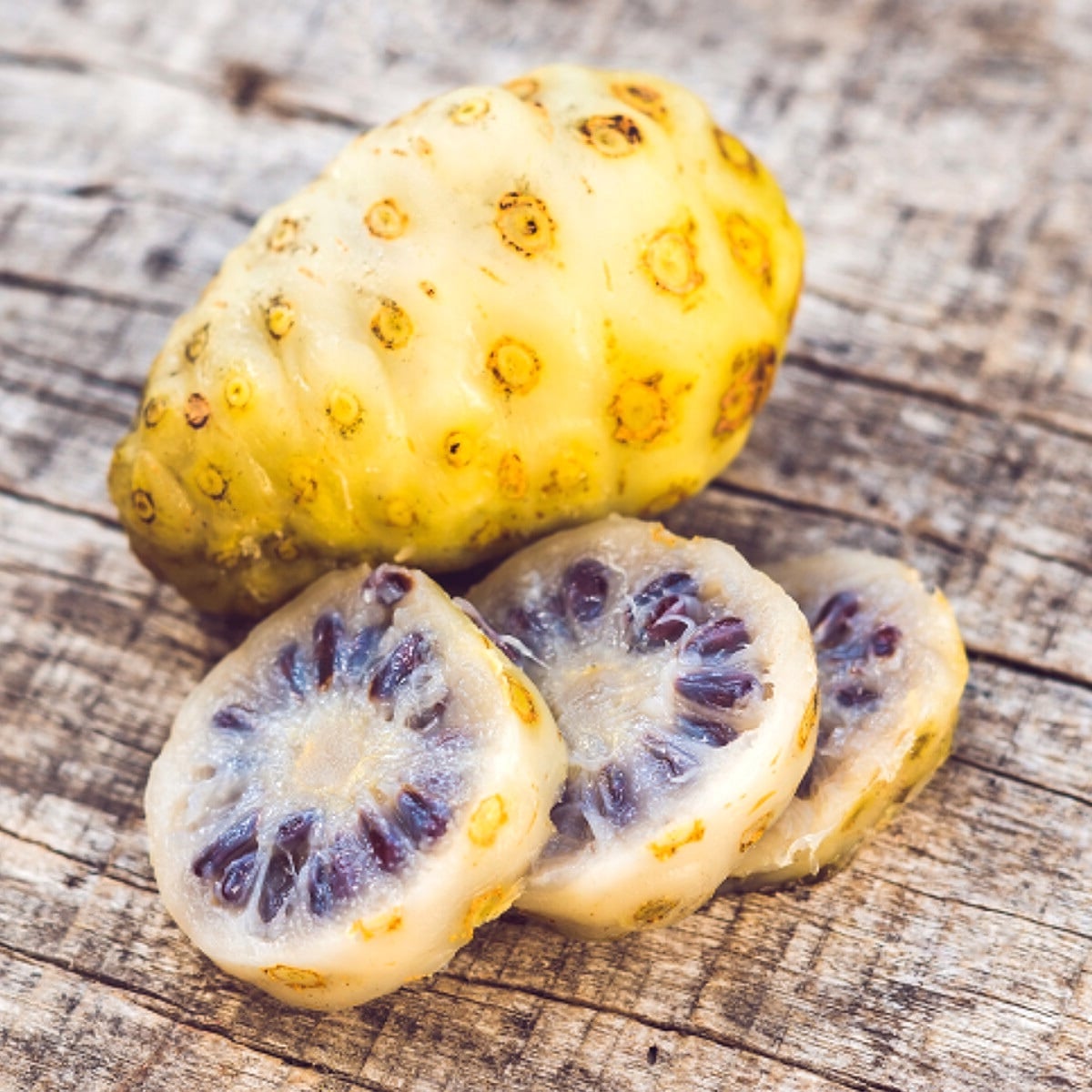
Unripe noni is light green and very hard. You cannot eat unripe noni raw, but it can be consumed once cooked. In this stage, noni is often diced up, cooked, and added to savory dishes such as curry.
Where to Find Noni
Noni, also known as Indian mulberry and great morinda, is native to the lands of the Pacific Ocean. It grows throughout Southeast Asia, the Pacific Islands, and Australia.
Native peoples spread the plant to Hawaii and other tropical islands in the region thousands of years ago. Noni is now quite a common fruit in Hawaii.
This tropical tree grows in warm climates and can survive a range of soil conditions, from sandy beaches to volcanic terrains. Despite its adaptability, it is not widely cultivated outside of its native range.
If you want to try noni, your best bet is to visit a fruit market in Asia or the Pacific Islands. These foul-smelling fruits are rarely exported and hard to find anywhere they don’t grow.
How to Store Noni
Unripe noni should be allowed to ripen in a cool, dark location with plenty of airflow. Once ripe, the fruit will only last a day or two, so use it immediately.
Cut, uncooked noni does not store well. If you do have leftovers, place them in an airtight container and put them in the fridge. Use within a day or two. Fresh noni can also be frozen and used for up to six months.
Noni juice should be stored in an airtight container and placed in the refrigerator. The fermented juice is shelf-stable and can be kept in the pantry or fridge indefinitely.
Noni Uses
Because it’s not common outside its native range, the uses of noni are largely restricted to the ways native people have historically used the fruit.
Most commonly, noni is juiced and fermented to create an elixir. The fermenting process takes around two months in commercial facilities. The elixir is consumed straight or mixed with water or sweet juice to make it more palatable.
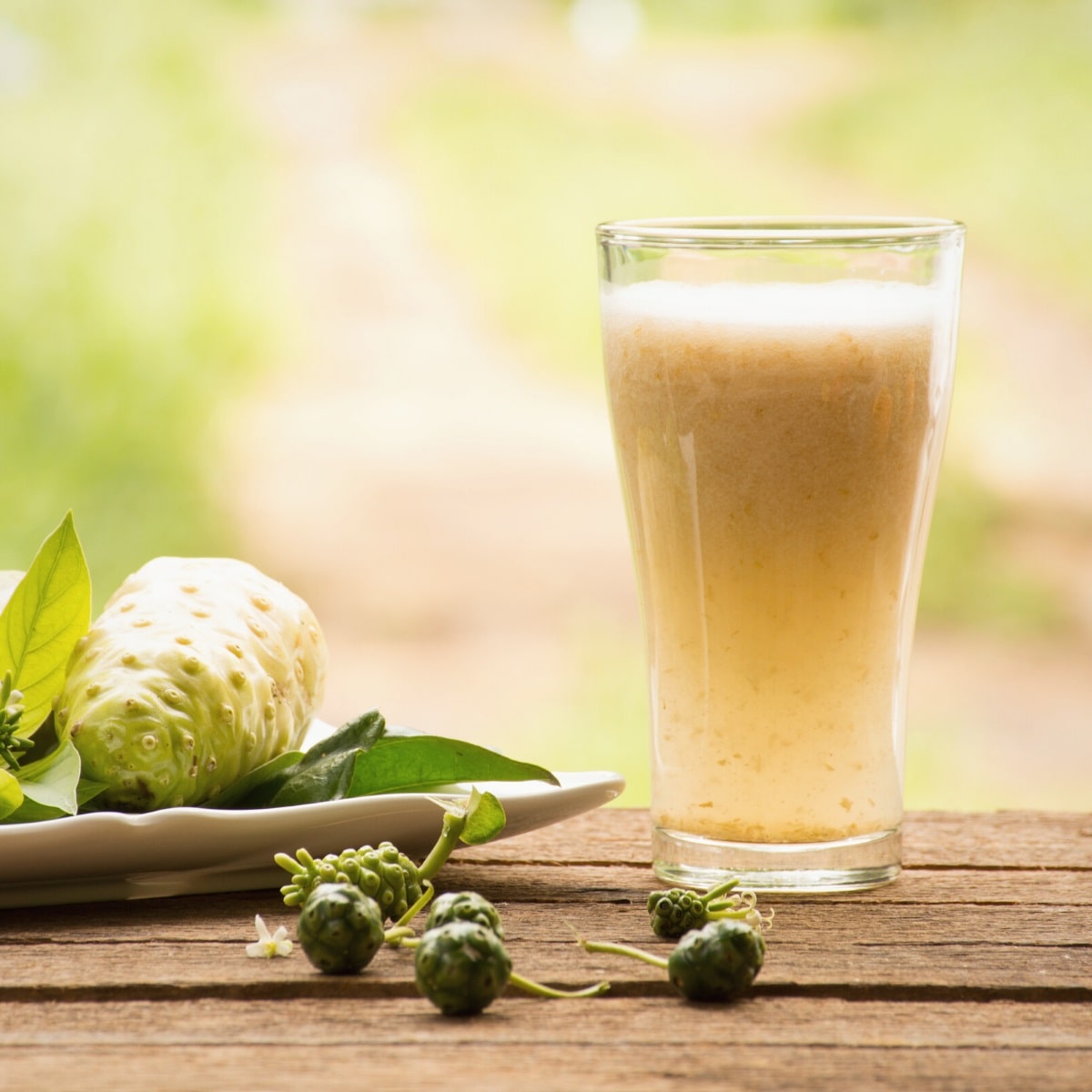
Blending and filtering ripe noni to make raw juice is also commonly done. This juice has a sweeter flavor than the fermented product.
Unripe noni can be cooked and used as a vegetable in a variety of dishes. Traditionally, it is used in curries and soups, but you can now find recipes for meatballs, spaghetti sauce, and saag that include noni.
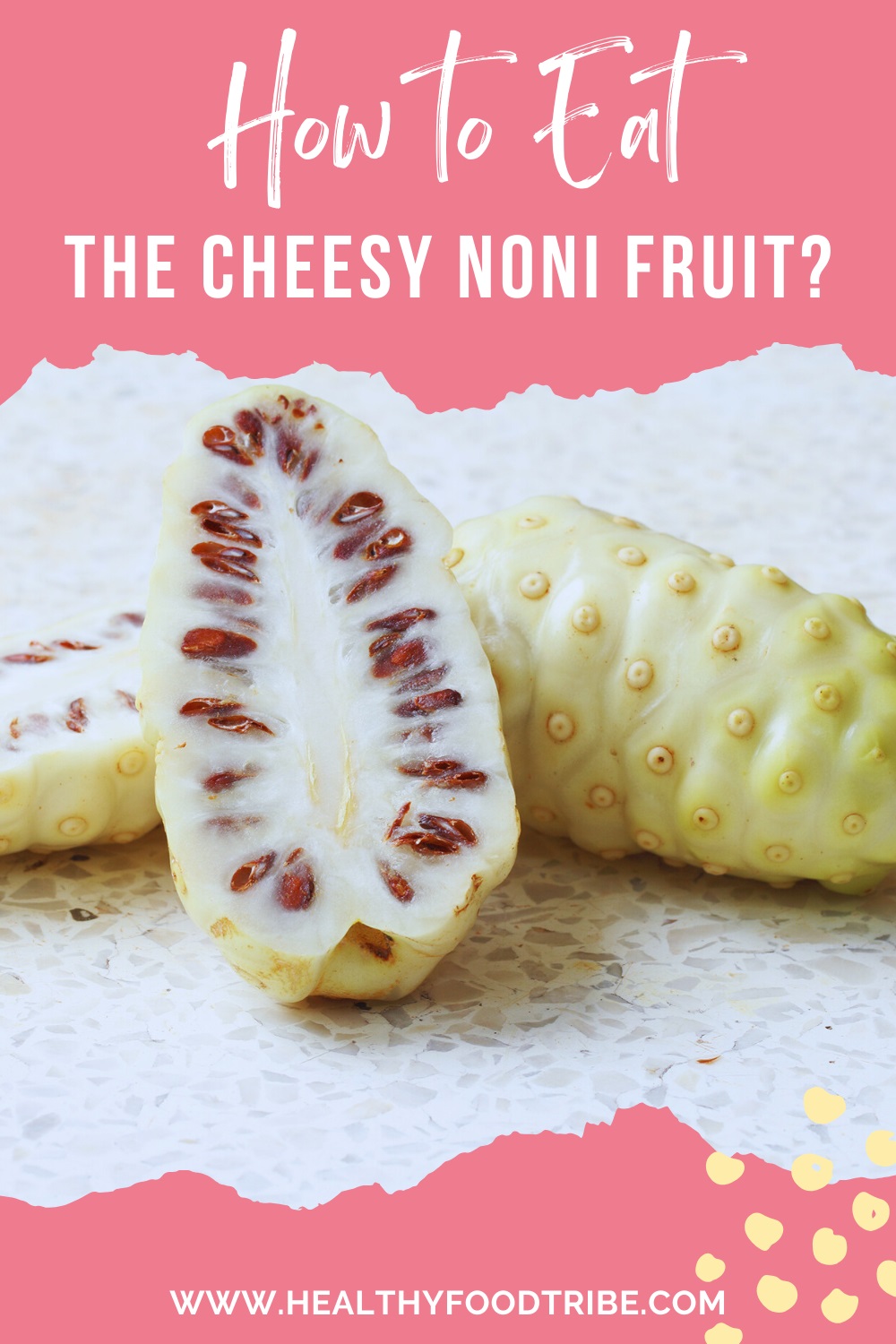
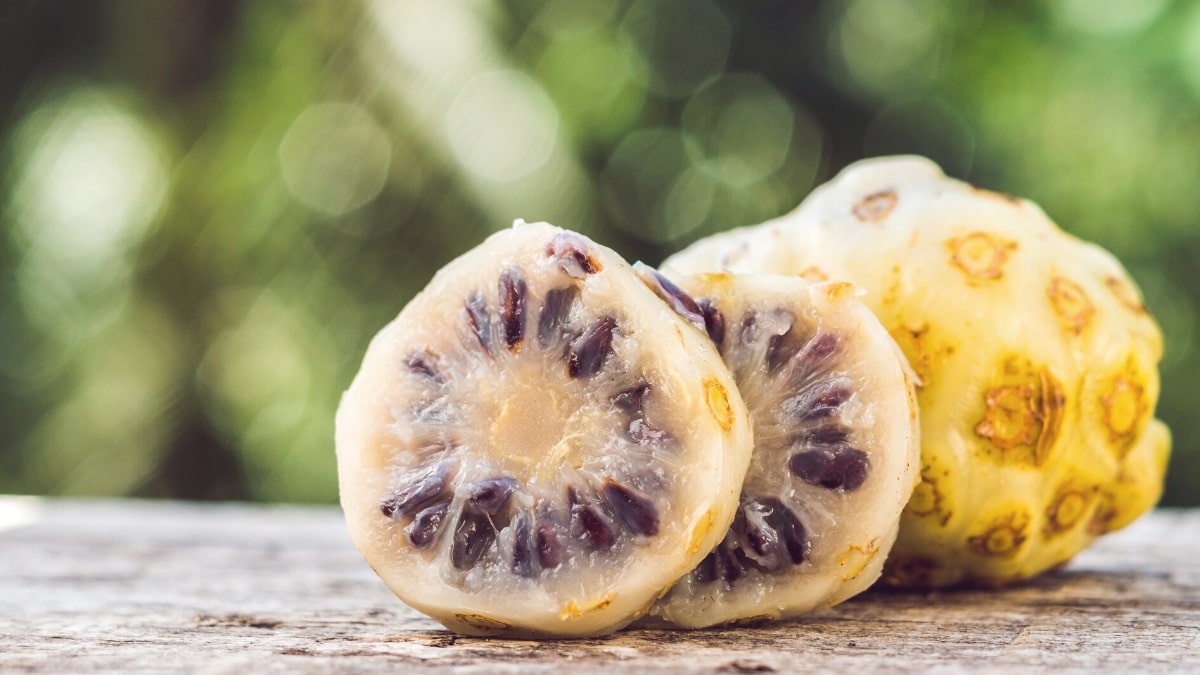
Hi Donna,
I planted this tree, and when the first fruit arrived, I waited until it was soft and put it into my mouth. However, it tasted like a rotten fruit. That was absolutely disgusting experience. Now, I have a few more fruits on the tree, and they are still firm. After reading the information above, including the fact that we can’t store them, I assume that maybe the fruit I tried was actually rotten, and I might have missed the timing for harvesting. Do you know the time frame for the fruit to be ready to harvest?
Thanks!
Hi Louise,
Noni is such a challenging fruit to deal with!
It’s hard for me to determine whether the noni fruit you ate was rotten, but maybe it was. What I do know is that even a ripe noni fruit can taste pretty awful, especially when you’ve never eaten one before.
I’ve never grown noni, so I can’t give you any advice on when to harvest and such. But maybe try another fruit (when it’s a bit softer), and instead of eating it, turn it into juice mixed with water.
Thanks for commenting, Louise, and let us know how you go!